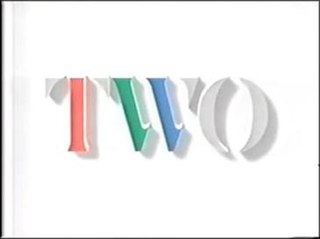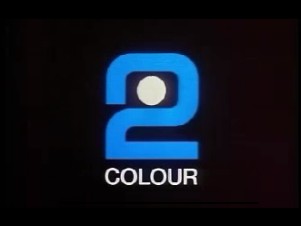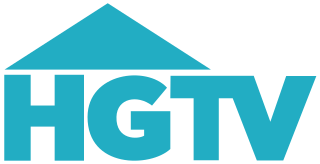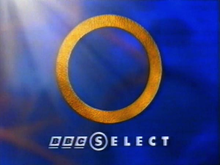BBC World Service Television, often abbreviated to WSTV, was the name of two BBC international satellite television channels between 1991 and 1995. It was the BBC's first foray into worldwide television broadcasting. In Europe, it was the successor to BBC TV Europe, which it replaced on 11 March 1991. The service was also launched in Asia as a 24-hour news and information service with minor differences, a precursor to BBC World News, launched on 14 October 1991.

The BBC One Balloon idents were a series of idents used on the British TV channel BBC One from 4 October 1997 to 28 March 2002. The balloon theme replaced the computer-generated spinning globe that had been used as the main ident on the channel since 1991, and marked a radical departure from the traditional spinning globe which had been the channel's primary identity since 1963. It launched on the same day as a BBC-wide rebrand, and thus the new idents also carried the new BBC logo. The channel's name also changed from BBC1 to BBC One. This was the last ident set used by the channel when it fully closed down; the last proper closedown took place in the evening hours of 8 November 1997. Starting the following evening, BBC News 24 would broadcast on BBC One during closedown, which continues today.

The BBC Learning Zone was an educational strand run by the BBC as an overnight service on BBC Two. It broadcast programming aimed at students in Primary, Secondary and Higher Education as well as to adult learners. Viewers are encouraged to watch programmes after the original broadcast via the use of, originally VHS, then later DVD. In 2015, the BBC confirmed that due to budget cuts, the service would no longer be running.

The Noddy was a camera system used for generating idents for the BBC One and BBC Two television channels from late 1963 to February 1985.
The history of BBC television idents begins in the early 1950s when the BBC first displayed a logo between programmes to identify its service. As new technology has become available, these devices have evolved from simple still black and white images to the sophisticated full colour short films seen today. With the arrival of digital services in the United Kingdom, and with them many more new channels, branding is perceived by broadcasters to be much more important, meaning that idents need to stand out from the competition.
Night Network, Night Time and Night Shift were names given to the overnight schedule of the ITV network in the United Kingdom. The first ITV company began 24-hour broadcasting in 1986, with all of the companies broadcasting through the night by the end of 1988. At first, individual companies created their own services; however, before too long, many of the smaller ITV stations began simulcasting or networking services from others.

The Computer Originated World (COW) was the method of creating the BBC1 symbol that was used between 18 February 1985 and 16 February 1991. It was later used by the international, commercial television service BBC World Service Television from its launch until 26 January 1995.

ITV Wales and West, previously known as Harlech Television (HTV), was an ITV franchise area in the United Kingdom until 31 December 2013, licensed to a broadcaster by the regulator Ofcom.
The logo of the BBC has been a brand identity for the corporation and its work since the 1950s in a variety of designs. Until the introduction of a logo in 1958, the corporation had relied on its coat of arms for official documentation and correspondence, although it rarely appeared onscreen. With the increased role of television for the BBC in the 1960s, particularly after the foundation of the ITV network, the corporation used its logo to increase viewer familiarity and to standardise its image and content. The logo has since been redesigned a number of times, most recently in 2021 with the BBC blocks, a logo designed to work across media. From 1958, there have been six different BBC logos. The first logo of the network was used from 1958 to 1963, the second from 1963 to 1971, the third from 1971 to 1992, the fourth from 1988 to 1997, the fifth from 1997 to 2021, while the sixth and current logo was adopted in October 2021.

The BBC Two "Two" ident was the station identification used on BBC2 between 30 March 1986 and 16 February 1991. It was the last non-corporate look for the channel, and the only look until 2018 that did not feature a numeral '2' in the design.
BBC Schools, also known as BBC for Schools and Colleges or BBC Education, is the educational programming strand set up by the BBC in 1957, broadcasting a range of educational programmes for children aged 5–16. From launch until June 1983, programming was based on BBC1 during the daytime, apart from coverage of major news events which saw the programmes shifted to BBC2. In September 1983, programming was transferred permanently to BBC2 freeing BBC1 to develop its own daytime schedule. The strand, named Daytime on Two, remained on BBC Two until March 2010, later supplemented by the 'Class TV' strand on CBBC.
BBC One used a number of different idents from the time of the station launch on 2 November 1936 until the station took on the Mirror Globe Idents on 15 November 1969.

The Cube 2 was an ident used by BBC Two between 2 December 1967 and 28 December 1974. It featured a stylised "2" that rotated on screen.

The launch ident was a television station identification used by BBC Two between their launch night in 1964 and the introduction of colour in 1967.
Throughout the years, Children's BBC, and later CBBC and CBeebies, have used a number of different identities. The branding of the stranded service is distinctive both in the past and at present.
The presentation and the identities of the BBC News channel in the UK alongside its international counterpart and the BBC Parliament coverage channel use specific identities that demonstrate their remit and purpose.
This is a timeline of the history of the British broadcaster Thames Television and its predecessor Associated-Rediffusion. Between them, they provided the ITV weekday service for London from 1955 to 1992, after which Thames continued as an independent production company until 2003.

HGTV (formerly Home) is a British free-to-air television channel interior home and garden-orientated lifestyle television channel broadcasting in the United Kingdom and Ireland, currently owned by Warner Bros. Discovery. The channel originally launched on 1 November 1997 as UK Style and then was rebranded to Home on 30 April 2009 and was rebranded to its current form on 21 January 2020. HGTV is broadcast 24 hours a day on Sky and TVPlayer. UK Style was transmitted by terrestrial provider ITV Digital 24 hours a day until the company's collapse in 2002. After a slight rebrand to UKTV Style, the channel made a return to terrestrial screens for a time in the mid-2000s as part of the now-defunct Top Up TV system. Home became available as a free-to-air linear service on Freeview from 1 March 2016.
This is a timeline of the broadcasting of schools programmes on television in the UK.
This is a timeline of overnight television broadcasting in the United Kingdom. It focuses on programming between midnight and 6am and includes details of when channels began into the night and 24-hour broadcasting.









